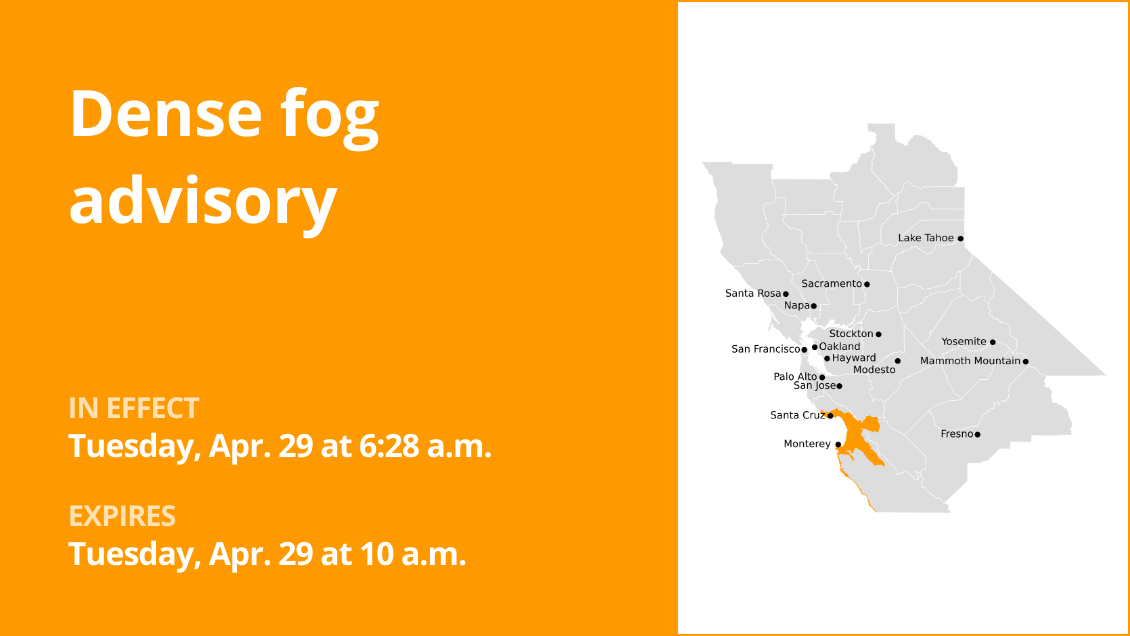Northern Monterey Bay, Northern Salinas Valley/Hollister Valley and Carmel Valley and Southern Monterey Bay and Big Sur Coast are the focus of a dense fog advisory released at 6:28 a.m. on Tuesday by the National Weather Service. The advisory is in effect until 10 a.m.
The NWS San Francisco CA adds to expect, “Visibility less than one half miles in dense fog.”
“Low visibility could make driving conditions hazardous,” according to the NWS. “If driving, slow down, use your headlights, and leave plenty of distance ahead of you. If commuting, allow extra drive time to reach your destination safely. Patchy dense fog will result in sudden changes in visibility. Visibility at times will fall below one-quarter of a mile. Use your low beam headlights, slow down, and be prepared for periods of hazardous driving conditions.”
Navigating fog: Safety tips by the NWS
When a dense fog advisory is issued for your area, it means that widespread dense fog has developed and visibility can plummet to a quarter-mile or less. These conditions pose challenges for travel, so exercise extra caution on the road or consider postponing your trip if possible.
If driving in fog becomes unavoidable, remember these safety tips:
Reduce speed:
Slow down and allow extra travel time to reach your destination safely.
Visibility matters:
Ensure your vehicle is visible to others by using low-beam headlights, which also activate your taillights. If you have fog lights, use them.
Avoid high-beams:
Refrain from using high-beam headlights, as they create glare that impairs your visibility on the road.
Keep a safe distance:
Maintain a generous following distance to account for abrupt stops or shifting traffic patterns.
Stay in your lane:
Use the road’s lane markings as a guide to staying in the correct lane.
Zero visibility strategy:
In cases of near-zero visibility due to dense fog, initiate your hazard lights and locate a secure spot, such as a nearby business parking area, to pull over and come to a halt.
No parking options:
If no parking area is available, pull your vehicle as far to the roadside as possible. Once stationary, turn off all lights except the hazard flashers, engage the emergency brake, and release the brake pedal to ensure your tail lights are not illuminated, reducing the risk of other drivers colliding with your stationary vehicle.
By adhering to these precautions from the NWS, you can navigate foggy conditions more safely, reducing the likelihood of accidents and ensuring your personal safety.





